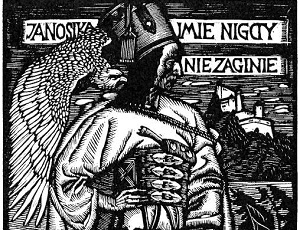
It is difficult to find out why Jánošík became so famous. It seems that the question is of an ethnological rather than a historical nature, as historical sources do not point to any facts that would make him stand out from numerous leaders of robber bands who roamed Carpathian mountains throughout centuries.
During the traditional Jagiellonian University Professors' Brunch, the Vice-Dean of the JU Faculty of History Prof. Stanisław Sroka delivered a lecture about the true history of Juraj Jánošík – the most famous robber from Carpathian mountains, who has become a semi-legendary figure, a noble outlaw who stole from the rich and gave to the poor, the hero of many folk stories, literary works and movies. The author of the lecture has given an interview to the JU Digital Media Unit.
According to Prof. Sroka, it is difficult to find out why Jánošík became so famous. It seems that the question is of an ethnological rather than a historical nature, as historical sources do not point to any facts that would make him stand out from numerous leaders of robber bands who roamed Carpathian mountains throughout centuries.
The vast majority of information about Jánošík comes from the court records from his trial in 1713, which resulted in his execution by hanging on a hook.
There is little information about Jánošík's life before he became robber in 1711. He briefly took part in the 1703 anti-Habsburg uprising, returned to his home village, and after several years joined the Habsburg army, which he had earlier fought against. When guarding a castle, he befriended a captive brigand Tomáš Uhorčík, whom he helped to escape from prison and later replaced as a leader of a band of brigands.
The main target of Jánošík's men were travelling merchants and officials, who were robbed of money and valuable items such as weapons, jewelry, tobacco and cloth. The robbers did not usually physically harm their victims, which was prohibited by their code. Yet, Jánošík was sentenced to death for a killing of a village priest, for which he pleaded not guilty, pointing to one of his comrades as the culprit.
The hanging of Jánošík's did not result in any decrease in robbers' activity in the region. It was as late as one hundred years later that the authorities finally managed to put an end to brigandage.
Today, the story of Jánošík has been mainly known from films, most of which lack historical accuracy and realism. The first of them was a Czechoslovak movie shot in 1921, which is currently recognised as one of the masterpieces of world cinematography. It was followed by two other Czechoslovak productions. In 1974 a popular Polish TV series was made by Jerzy Passendorf, thanks to which many Poles have associated Jánošík with a popular actor Marek Perepeczko, who has often been considered perfectly suited for that part. More recently, another Polish film director, Agnieszka Holand approached the topic from a completely different angle, presenting Jánošík as a complex character who is full of doubts. However, according to Prof. Sroka, this interesting artistic vision has not changed the prevailing image of Jánošík, who is still widely remembered as a folk hero.
The article is based on an interview with Prof. Stanisław Sroka carried out by Łukasz Wspaniały from the JU Digital Media Unit.





